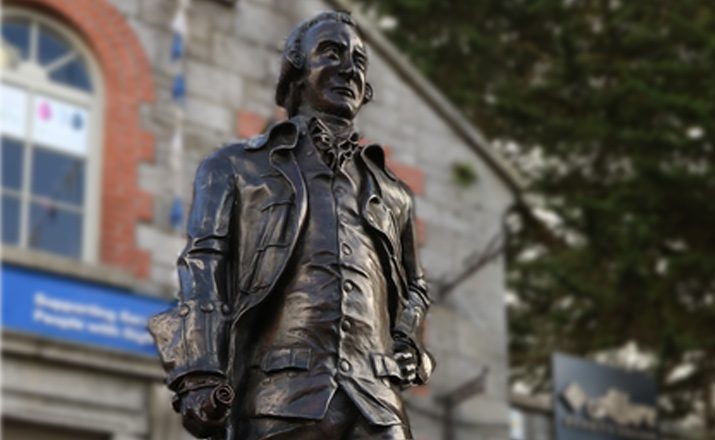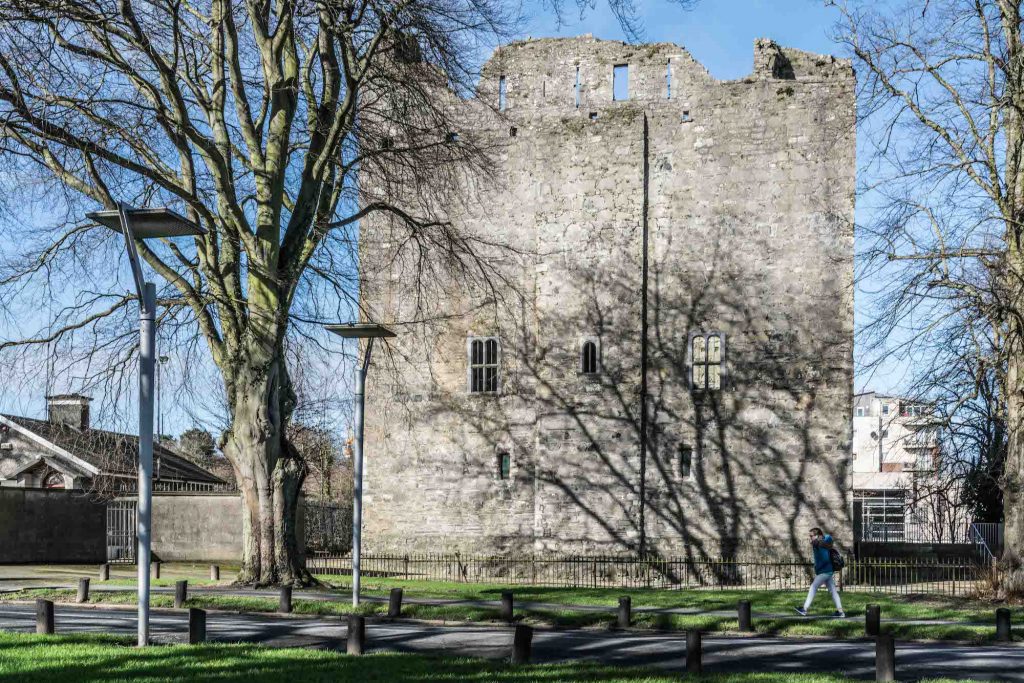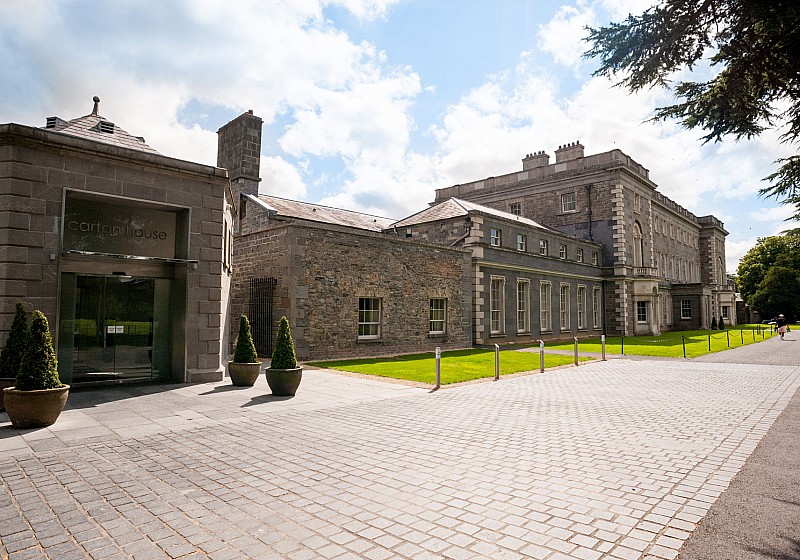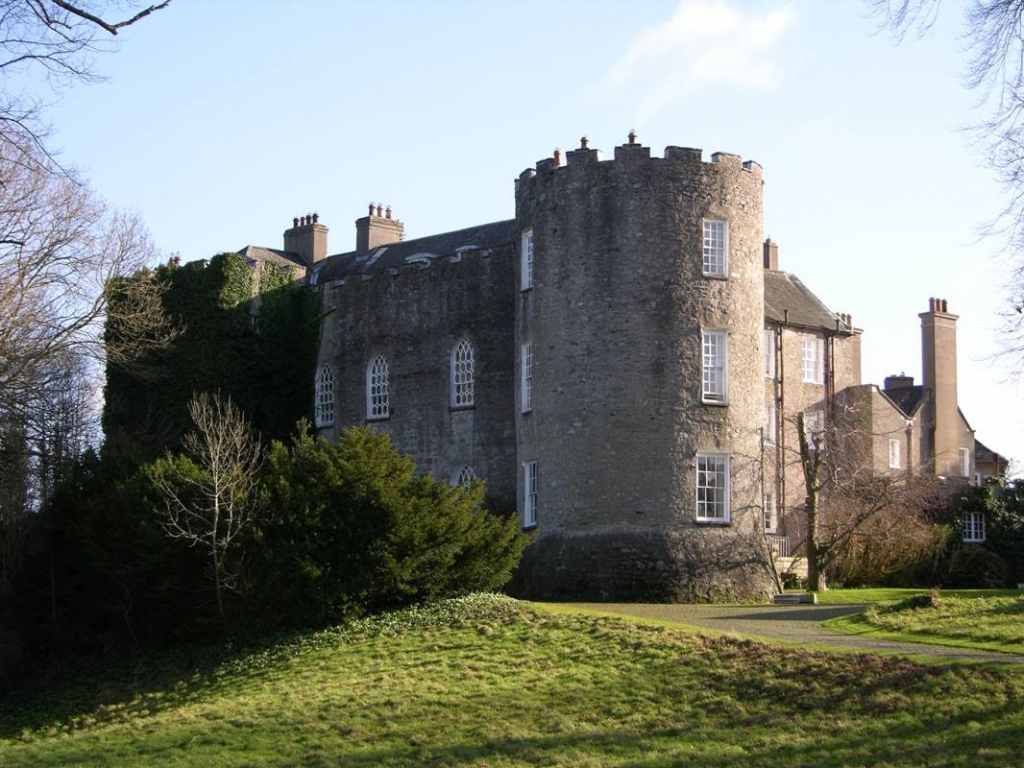Castletown is located in Celbridge, Co. Kildare, just 20km from Dublin City Centre. The area around Celbridge is steeped in history, and you will find some great stops to make on your day out after visiting us here. Once you have toured the house or participated in an event, had lunch or coffee, and strolled the parkland, why not stay local and visit some of these wonderful heritage attractions?

Walk down Castletown’s beautiful Lime Avenue and exit the pedestrian gate to Celbridge town. Here you can begin a great local heritage trail, which is completely free to access, whether through brochure download, map, or audioguide. Along the way you will meet such historic characters as Arthur Guinness, Jonathan Swift, and Henry Grattan, as well as our own Speaker Conolly. The walking trail begins at Castletown House and takes you to such important locations as Celbridge Mill, Tea Lane Church, and Celbridge Abbey.

Just 7km away from Castletown House is Maynooth Castle. As with Castletown, Maynooth Castle is also operated by the Office of Public Works.
This great stone castle was founded in the early thirteenth century and became the principal residence of the Kildare branch of the Geraldines. The Kildare FitzGeralds extended their land holdings and influence, emerging as one of the most powerful families in Ireland with Maynooth Castle being one of the largest and richest Earl’s houses. Garret Mór, known as the Great Earl of Kildare, governed Ireland in the name of the King of England from 1487-1513 and under his son, Garret Og the 9th Earl, the Castle became the centre of political power and culture. The original Keep, constructed c. 1203, was one of the largest of its kind in Ireland. Early in the seventeenth century the castle was remodelled and the main focus of the Castle shifted from the original Keep to the buildings in the east of the grounds. It was vested in the State in 1991 and a programme of restoration commenced in February 2000. There is an exhibition in the Keep on the history of the castle and the family.
Find opening hours and directions to Maynooth Castle here.

A couple of other nearby significant heritage buildings which have historic links with Castletown may be of interest. These are Carton House and Leixlip Castle. Read on for more details on both.
Much of Castletown’s beautiful interior decoration was the achievement of Lady Louisa Conolly in the 1760s and 1770s. Louisa came to Castletown House after her marriage to Tom Conolly. They had no children and Louisa instead devoted much of her energies to improvements to the house and demesne at Castletown. The Staircase Hall, Dining Room, Print Room and Long Gallery are amongst the rooms that can be considered symbols of her contribution to the house. (See photos of all of these in our Online Tour here.) Castletown in these years again became a lively, hospitable place with a constant stream of visitors including everybody from the Lord Lieutenant to London actress Sarah Siddons. Read more about the Conolly family and Castletown here.
Carton, to the north east of Castletown, was where Lady Louisa had spent most of her childhood. Carton was also the home of her sister Emily, first Countess of Kildare and later Duchess of Leinster. Much of the work that Louisa carried out on Castletown’s interior was guided by the advice of her brother-in-law, the Duke of Leinster. Just as Louisa had improved Castletown, so Emily had also created beautiful rooms, follies, and landscaping at Carton. Today, Carton House is a hotel, where you can enjoy a coffee pitstop on your travels, while admiring many original features of eighteenth-century rooms.
Information on visiting Carton House is here, and you can download A Walk Through Carton House: 835 Years of History here.

Castletown House was built in the 1720s by the Speaker of the Irish House of Commons, William Conolly. Before he built Castletown, he lived at Leixlip Castle, and it was here that his son Tom was born (Tom would go on to marry Louisa, described above). The first thing that you may notice on coming through Castletown’s front door, above the mantelpiece in the Entrance Hall, is a painting with a view of Leixlip Castle. This has been attributed to Joseph Tudor (d. 1759).
Dating from the twelfth century, the Castle has been occupied by many owners; since the 1950s it has been owned by the Guinness family. A splendid collection survives at Leixlip Castle, from Chippendale chairs in the Dining Room, to a seventeenth-century tapestry in the Front Hall, to a remarkable eighteenth-century dolls house in the Drawing Room. The gardens boast a conservatory, a temple, and a fine walled vegetable garden.
Contact the Castle directly to ascertain opening times for the season before visiting – you can find details here.
For more great places to visit while you are in the area, check out the comprehensive listings on the websites of Into Kildare and Ireland’s Ancient East. Or have a chat with any of our friendly guides at the end of your tour – we have plenty of recommendations!
